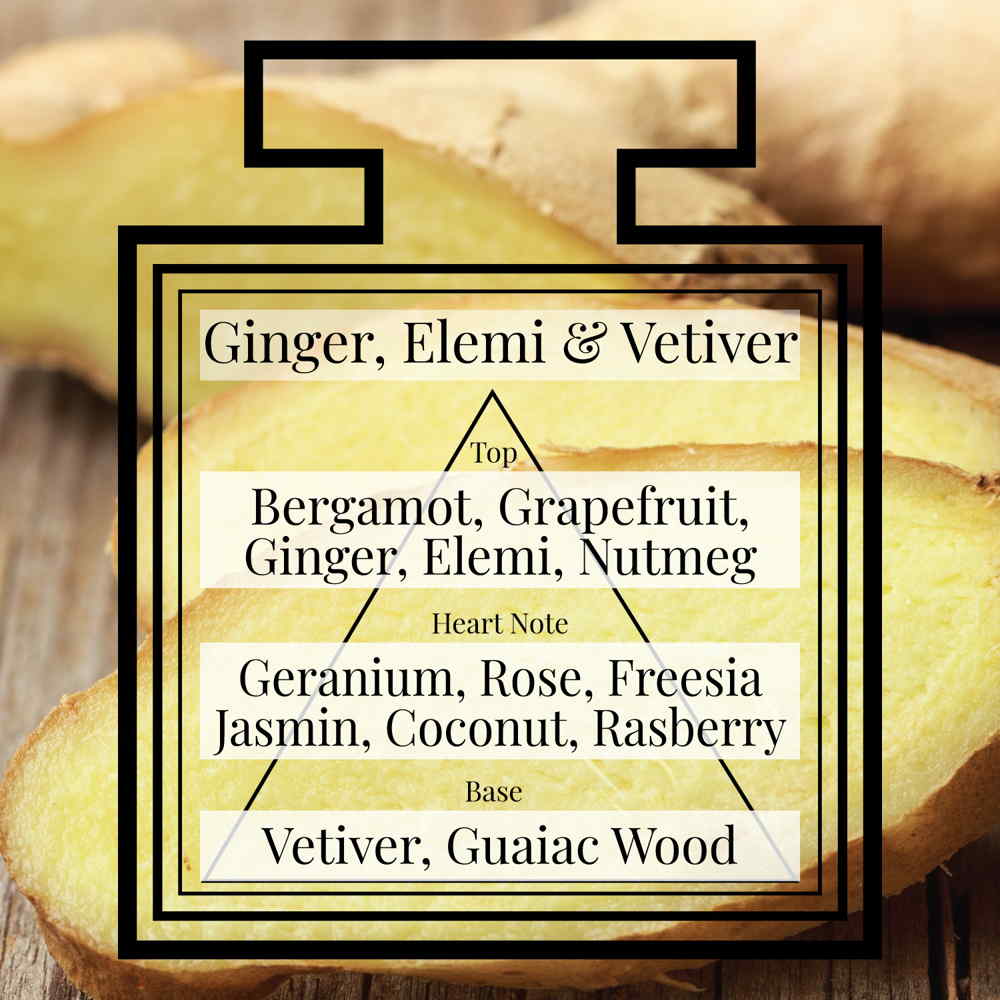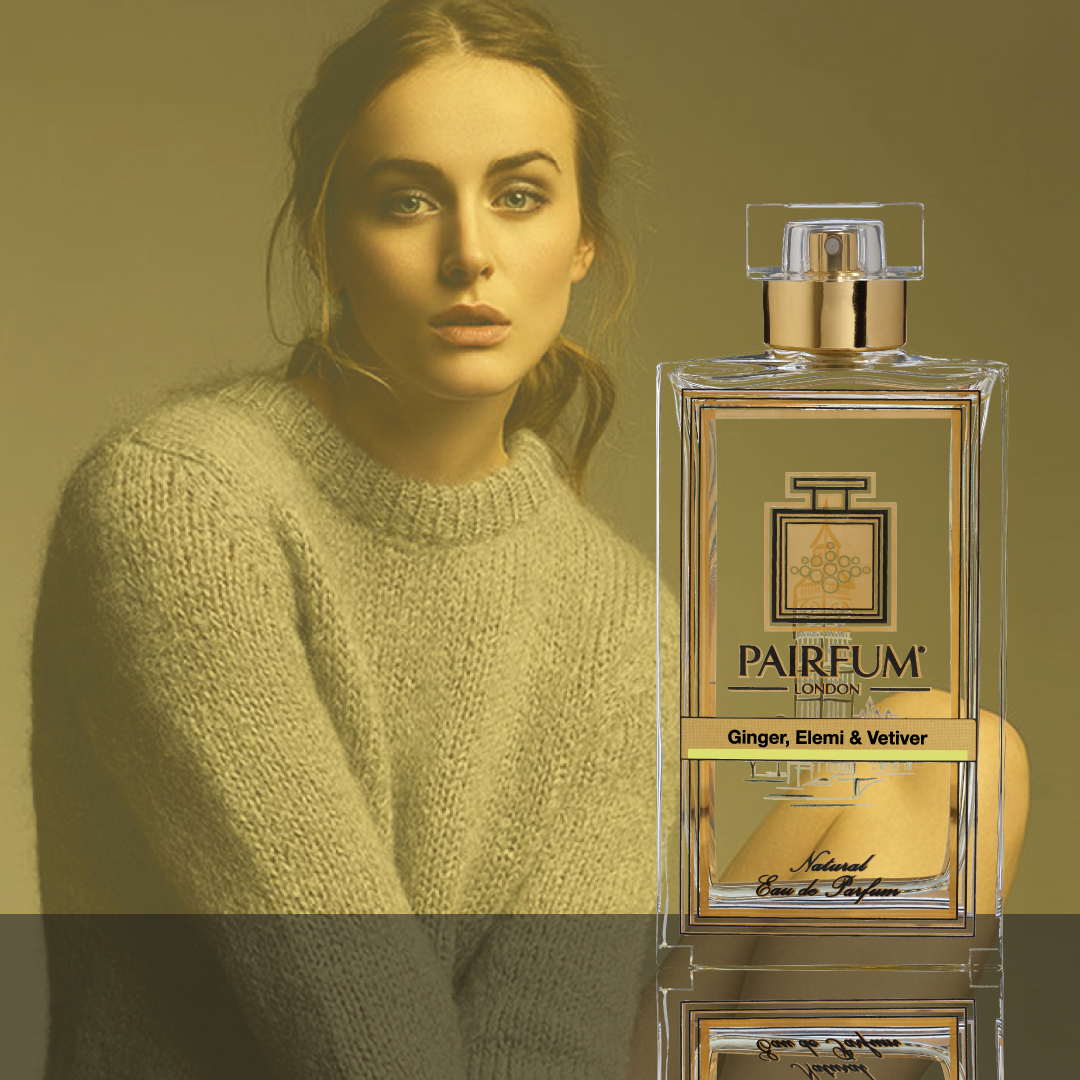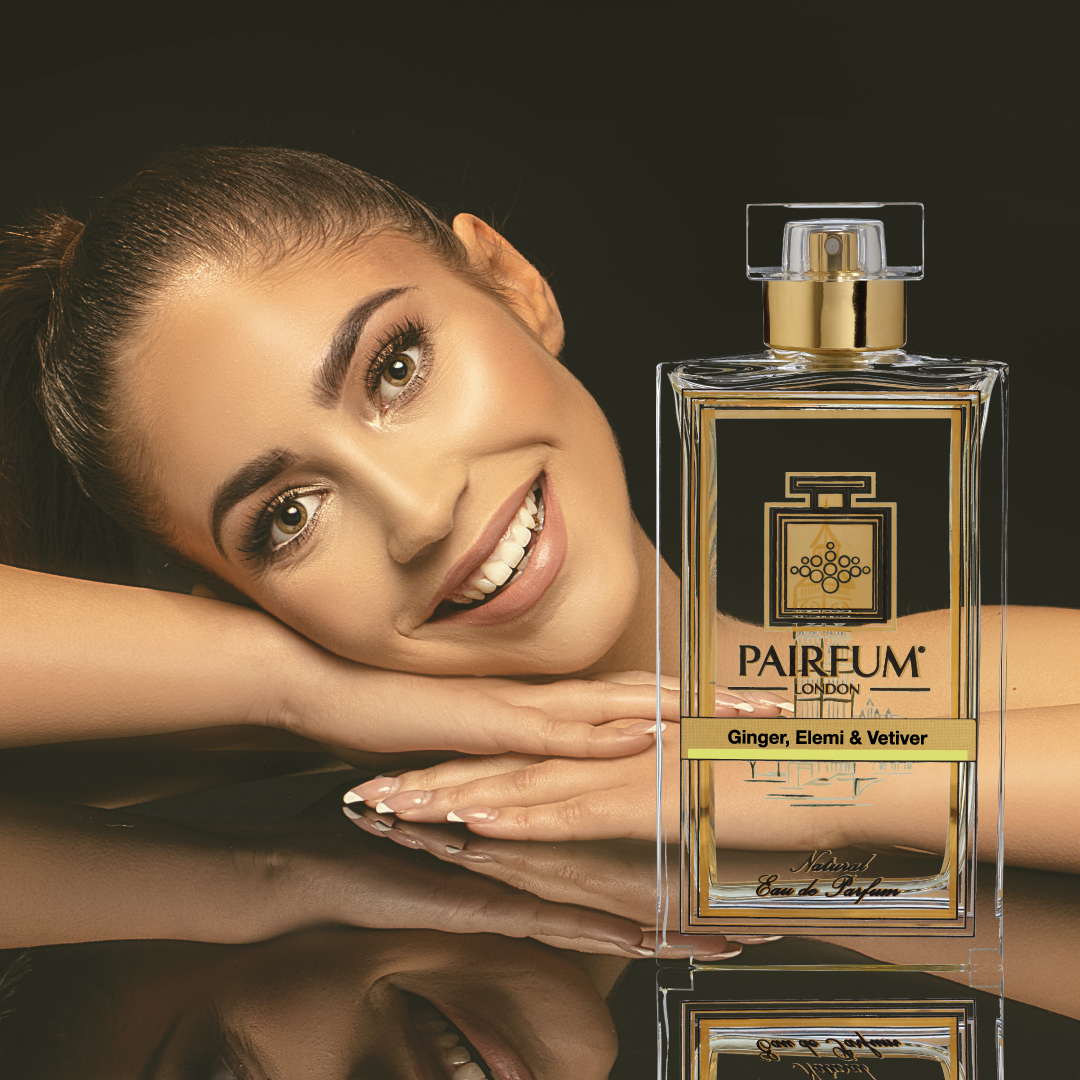Ginger: Spicing Up Modern Fragrances

Ginger has been cherished across cultures for millennia. This revered rhizome, commonly known as ginger root, boasts a rich history, travelling ancient trade routes and finding roles in culinary traditions, medicine, and now, perfume. Its spicy, warm aroma captivates, giving perfumes a unique twist that’s hard to replicate. From ancient uses to modern fragrance applications, ginger offers intriguing depth and character, blending seamlessly to create bold yet refreshing scents.
The Historical and Cultural Importance
The ginger plant originated in Southeast Asia thousands of years ago. Ancient civilisations quickly recognised its potential, incorporating it into diets and daily life for its myriad properties. It became more than just an aromatic spice; it was a valuable commodity, even a form of currency.
Through trade routes, ginger spread to India, China, the Middle East, and eventually Europe. In Old English, it was "gingiber," evolving to "gingere" in Middle English. Each culture found unique uses for ginger, appreciating its culinary charm and profound medicinal powers. Ancient texts from Chinese and Indian medical practices, such as Ayurveda, frequently mention ginger for its soothing and healing abilities. In Ayurveda, ginger is known as "Mahaushadha" (great medicine), highlighting its wide range of therapeutic applications. It was used to treat ailments from colds and nausea to inflammation. Its pleasant, warm fragrance was also incorporated into rituals and early aromatic oils.
The captivating aroma of ginger cemented its place in history. Whether adding a luxurious touch to Roman bathhouses or balancing energies in Ayurvedic practices, ginger’s role as a fragrant wonder remains unchanged. Its historical significance as a global commodity and traditional medicine staple underscores its enduring value, still recognized in modern science.

The Chemical Composition and Olfactory Profile of Ginger
Understanding ginger's unique chemical composition reveals its diverse scent profile. The pungent aroma and flavour of Zingiber officinale come from volatile essential oils and non-volatile pungent compounds.
Essential oils, making up 1-3% of fresh ginger's weight, are responsible for its aroma. Key compounds include zingiberene, for spicy notes; beta phellandrene, offering minty facets; and curcumene, adding woody nuances. Citral and citronellal can impart fresh, citrusy qualities. The specific blend varies by origin and processing, leading to subtle differences in aroma and flavour.
Non-volatile compounds, primarily gingerols, shogaols, and paradols, create ginger's characteristic 'heat'. Fresh ginger is rich in gingerols. When ginger is dried ginger or heated, gingerols convert to shogaols (more pungent) or zingerone (sweeter). This explains why dried ginger or cooked ginger has a different scent than fresh ginger. These compounds also contribute to ginger’s anti-inflammatory and antioxidant properties. Understanding this interplay helps perfumers select ginger extract for specific aromatic effects. The natural flavour of ginger is truly unique.
Types of Ginger Used in Perfumery
Perfumes use several types of ginger, each offering a unique aromatic palette, primarily from Zingiber officinale:
- Zingiber officinale (Common Ginger): The most widespread type in perfumery and cooking. Valued for its classic spicy, zesty essence, its fiery, warm, and sometimes lemony notes add invigorating warmth and depth. This fresh ginger root forms the backbone of many ginger fragrances. Both fresh ginger and ground ginger are widely used.
- Japanese Ginger (Shoga): Also Zingiber officinale, but milder and sweeter. It provides a refreshing, almost floral note that balances well with delicate florals and bright citrus, offering a refined interpretation. Young ginger is often associated with this type due to its tenderness.
- Blue Ginger (e.g., Zingiber zerumbet or related to galangal): Rarer in Western perfumery, this ginger has distinct camphoraceous, slightly woody, and often floral undertones. It adds complexity and an exotic twist, prized for unique nuances. Wild ginger species also offer unique aromatic qualities, though less cultivated.
Other varieties, like Chinese ginger (stronger, more pungent) and Indian ginger (sharper, more citrusy/earthy), also exist. Each type of ginger brings different character, creating aromatic layers. Combining them allows perfumers to balance zest and warmth, fresh and spicy, creating memorable fragrances. The ginger family is an aromatic treasure trove.

Extraction Methods
Creating ginger oil for perfumes draws out the ginger root’s character, with methods influencing the final ginger extract.
- Steam Distillation: The most common method for producing ginger essential oils. Ginger rhizome is heated with steam, vaporizing volatile compounds. The vapour cools, separating into essential oil and floral water. Steam distilled ginger essential oil is prized for its intensity, clarity, and true spicy aroma, ideal for a distinct ginger note.
- CO2 Extraction: Uses supercritical carbon dioxide to extract aromatic and pungent compounds from ginger. This gentle process extracts a broader range of compounds, including heavier ones like gingerols and shogaols, contributing warmth and depth. The resulting ginger extract is very true to the natural scent, with a fuller, more complex, and longer lasting aroma, free from solvent residues.
- Solvent Extraction: Less common for pure ginger essential oils, this method uses a volatile solvent to dissolve aromatic compounds from the ginger plant material. After evaporation, it leaves a concentrated ginger extract called a "resinoid" or "absolute." This method can capture a broad, deep aromatic profile, including resinous and nuanced notes, requiring careful purification.
Each method uniquely contributes to the perfume’s bouquet. Steam distillation offers a bright, bold ginger essence for clear, spicy top or heart notes. CO2 extraction provides a richer, warmer ginger profile for deeper nuances and longevity. This diversity in ginger extract forms gives perfumers flexibility, making every ginger fragrance unique.
Pairing Ginger with Other Fragrance Notes
Ginger’s versatility shines in its ability to harmonise with diverse fragrance notes, making it a beloved ingredient. Its spicy warmth and fresh zest complement many olfactory families. Its unique flavour is highly sought after.
For fresh and citrusy compositions, ginger adds a vibrant, invigorating kick. It pairs well with lemon, bergamot, grapefruit, mandarin, and lime, enhancing their crispness for energetic, uplifting scents.
With florals, ginger introduces a modern edge, adding warmth and subtle spiciness that prevents notes like rose, jasmine, or ylang ylang from becoming cloying. It can bring a contemporary twist to traditional floral bouquets.
In oriental and spicy perfumes, ginger naturally enhances cinnamon, clove, cardamom, nutmeg, and pink pepper. It also blends beautifully with rich base notes like amber, vanilla, frankincense, myrrh, and resins, creating opulent, comforting, and long-lasting dry downs.
For woody and earthy fragrances, ginger provides a vibrant counterpoint to sandalwood, cedarwood, vetiver, and patchouli. It adds freshness and pungency, preventing heaviness and creating intriguing profiles. Its subtle green facets can also complement herbaceous notes like basil or mint.
Ginger also excels in gourmand compositions, lending warmth and spice reminiscent of baked goods, teas, or confections, especially with vanilla or caramel. Think ginger biscuits or a spicy ginger snap. The masterful pairing of ginger with other ingredients creates captivating scent stories, showcasing its dynamic personality.

The Health and Wellness Aspects of Ginger
Beyond aroma and culinary uses, ginger offers remarkable health benefits, recognized for millennia and supported by research. While not directly influencing a perfume's function, these properties enrich ginger's narrative as an ingredient.
- Anti-inflammatory Properties: Ginger is known for its anti-inflammatory effects, largely from gingerols and shogaols in the ginger root. These compounds reduce inflammation, making ginger a popular remedy for arthritis, muscle pain, and menstrual cramps. Ginger consumption is widely recommended.
- Antioxidant Powerhouse: Phenolic and terpene compounds in ginger act as powerful antioxidants, neutralizing free radicals and protecting cells. This contributes to overall cellular health and may help prevent chronic diseases. Ginger extract is often concentrated for this benefit.
- Digestive Aid: Ginger is celebrated for soothing digestion. It’s effective for nausea (motion sickness, morning sickness, chemotherapy-induced). It aids digestion, reduces bloating, and relieves indigestion by promoting healthy gut movement. Raw ginger or a ginger tea are common remedies.
- Immune Support: Rich in vitamins (C, B6), minerals (magnesium, potassium), and antioxidants, ginger strengthens the immune system. Traditionally used for cold and flu symptoms like sore throats, promoting warmth and sweating. A herbal tea with ginger is a common comfort.
- Blood Sugar Regulation: Research suggests ginger may help manage blood sugar levels by influencing insulin sensitivity and glucose uptake. This is a promising area for the ginger root. Maintaining healthy blood sugar is vital.
- Eye and Sexual Health: Emerging studies explore ginger's potential for eye health, suggesting it may alleviate eye fatigue by enhancing blood flow. Preliminary studies also suggest ginger may enhance sexual health by counteracting disgust, though more rigorous study is needed. Ginger consumption for overall well-being is global.
- Mental Well-being: Compounds in ginger, including gingerols, may impact mental health. Research suggests interaction with serotonin receptors, potentially contributing to mood enhancement and anxiety reduction. Regular ginger consumption might offer a subtle boost to mental health.
The diverse health benefits of the ginger root make it a truly remarkable ingredient, extending its influence beyond aroma and culinary uses. A ginger supplement is a popular way to consume ginger for these benefits.
Culinary Applications
Ginger is an incredibly versatile ingredient in the kitchen, adding its distinctive flavour to dishes worldwide. Both fresh ginger and dried ginger, as ground ginger or dried herbs, offer unique characteristics.
In Asian cuisine, fresh ginger is indispensable. It's often grated ginger or sliced for stir-fries, curries, and marinades. A classic recipe involves steaming fish with ginger and soy sauce, where fresh ginger root cuts richness. Many Asian soup recipes use charred ginger for broth depth. Ginger's warm notes complement chicken and duck, and it's key in dipping sauces, sometimes with olive oil.
Dried ginger, especially ginger powder, has a concentrated flavour and spicier kick. It's common in baking for ginger biscuits, ginger snap cookies, and gingerbread. Dried ginger also features in savoury spice blends, stews, and some frozen food where its stable flavour is beneficial. Stem ginger, preserved in syrup, offers a sweeter, milder ginger flavour for desserts and confectionery, sometimes with dry fruits.
For beverages, ginger ale and ginger beer are popular. Ginger beer, traditionally fermented, has a stronger ginger presence. Ginger tea, from fresh ginger or dried ginger, is a popular herbal tea for warmth and digestion. Raw ginger can be juiced for potent plant juices in health shots. Even bee products, like honey infused with ginger, are gaining popularity. The flavour profile of ginger, fresh or dried ginger, is truly adaptable.

Growing Ginger: A Brief Insight
The ginger plant, Zingiber officinale, is a tropical perennial thriving in warm, humid climates. It grows from a fleshy underground stem, the rhizome, commonly called ginger root. For cultivation, selecting a healthy ginger rhizome with visible "eyes" or buds is crucial.
Ginger plants prefer well-drained, loose soil rich in organic matter. Adding compost improves drainage, mimicking its native habitat. The rhizome should be planted shallowly, spreading horizontally as it grows. While enjoying warmth, the ginger plant prefers partial shade, as direct sun can scorch leaves. Adequate watering is vital, but overwatering can rot the rhizome in the compost. Harvesting the ginger rhizome typically occurs when leaves yellow, 8-10 months after planting. Young ginger is harvested earlier for tenderness, while mature ginger root has a more developed flavour.
Iconic Perfumes Featuring Ginger
Ginger has made a mark in the perfume world, with several well-known fragrances proudly showcasing its spicy allure. These iconic perfumes have become favourites among many, thanks to the distinctive touch ginger offers.
Eau de Gingembre: This perfume combines the zest of ginger with subtle floral hints, creating an invigorating aroma that is both refreshing and energising. Its popularity continues to grow due to its vibrant and uplifting character.
Ginger Essence: Known for its elegant blend of ginger and citrus notes, this perfume exudes a sophisticated aura. It’s a favourite for those who appreciate a fragrance that transitions elegantly from day to night.
Ginger, Elemi & Vetiver – Eau de Parfum: A surprising fusion of spices and freshness, it opens with notes of Bergamot, Grapefruit and a trace of Lavender, combined with Ginger, Elemi, Nutmeg & Cinnamon. The heart is composed of Geranium, Rose, Freesia, Gardenia, Jasmine and Orange Blossom, with fruity hints of Coconut and Raspberry. A base of Vetiver, Guaiacwood, Cedar, Amber, Cashmere Musks, Vanilla & Moss supports this note beautifully.
The role ginger plays in these perfumes isn’t just about adding spiciness. It’s about enhancing the entire harmony of the fragrance, providing warmth, depth, and a sense of freshness. Perfumes like these show why ginger remains a beloved choice among perfumers looking to craft distinct and memorable creations.

The Modern Uses of Ginger in Fragrance
As trends evolve, ginger remains a key ingredient in contemporary fragrances. Modern perfumers appreciate ginger for its remarkable versatility. It seamlessly fits into various families, from fresh to spicy, woody, and even gourmand. This adaptability makes ginger a staple in many trendy perfumes, often contributing to gender-neutral scents due to its universally appealing character and complex flavour.
Ginger’s enduring appeal lies in its ability to evoke rich sensory experiences. Ginger perfumes can recall exotic travels or warm holiday memories, making the aroma a gateway to cherished moments. Its presence transforms a fragrance into an olfactory journey that entices. Furthermore, with increasing demand for natural and sustainably sourced ingredients, ginger, as a widely cultivated natural ginger extract, aligns perfectly with modern preferences for quality and mindful sourcing. Consumers are increasingly seeking personal information about ingredient origins.
Incorporating ginger into modern perfume highlights a brand’s creativity and embrace of timeless ingredients with a contemporary twist. In a world valuing natural elements, ginger symbolises elegance, sophistication, and vibrant natural energy. This timeless quality, adaptability, and ability to convey natural vitality and comfort ensure ginger’s secure place in aromatic collections. The flavour of ginger is truly timeless.
Ginger, Elemi & Vetiver – Eau de Parfum by Pairfum London
A surprising fusion of spices and freshness, it opens with notes of Bergamot, Grapefruit and a trace of Lavender, combined with Ginger, Elemi, Nutmeg & Cinnamon. The heart is composed of Geranium, Rose, Freesia, Gardenia, Jasmine and Orange Blossom, with fruity hints of Coconut and Raspberry. A base of Vetiver, Guaiacwood, Cedar, Amber, Cashmere Musks, Vanilla & Moss supports this note beautifully.

Conclusion
Ginger, with its remarkable history and multifaceted nature, continues to charm those seeking unique, captivating fragrances. This illustrious spice has proven its worth through centuries of cultural appreciation, remaining a beloved ingredient across industries. In perfumery, ginger is celebrated for blending seamlessly with other elements, creating inviting, complex, and surprisingly versatile aromas. The use of ginger in perfumes testifies to its enduring appeal.
Exploring ginger in perfumes invites deeper appreciation for this vibrant ginger root. It’s an adventure revealing how its richly layered aroma, from zesty top notes to warm, earthy dry downs, elevates a fragrance, making it memorable and full of character. The flavour journey it offers is exceptional. Those choosing a ginger-infused aroma often feel transported, enjoying a sensory experience connecting ancient traditions with modern elegance and well-being. Let curiosity guide your discovery of ginger scents. The robust flavour and numerous benefits of ginger ensure its continued prominence.
https://www.pairfum.com/ginger-spicing-up-modern-fragrances/?fsp_sid=7661
#ARTISANPERFUMERSOFLONDON #FRAGRANCE #GINGERFRAGRANCE #GINGERPERFUME #GINGERSCENT #GINGERFRAGRANCE #GINGERPERFUME #INSTAPERFUME #LONDON #LOVE #NATURAL #NICHE #PERFUME #PERFUMEINGREDIENTS #PERFUMELOVERS #SCENT
Comments
Post a Comment